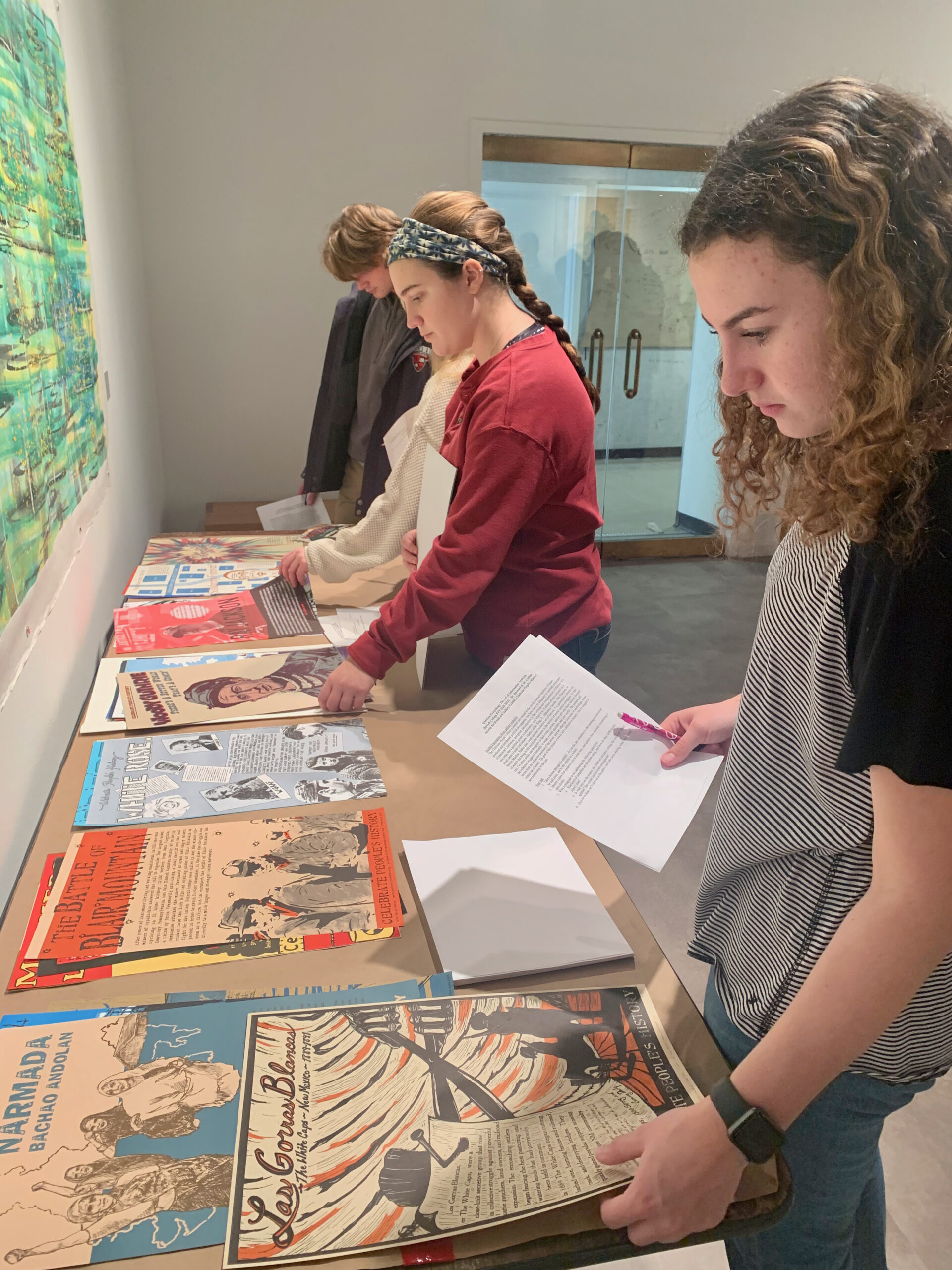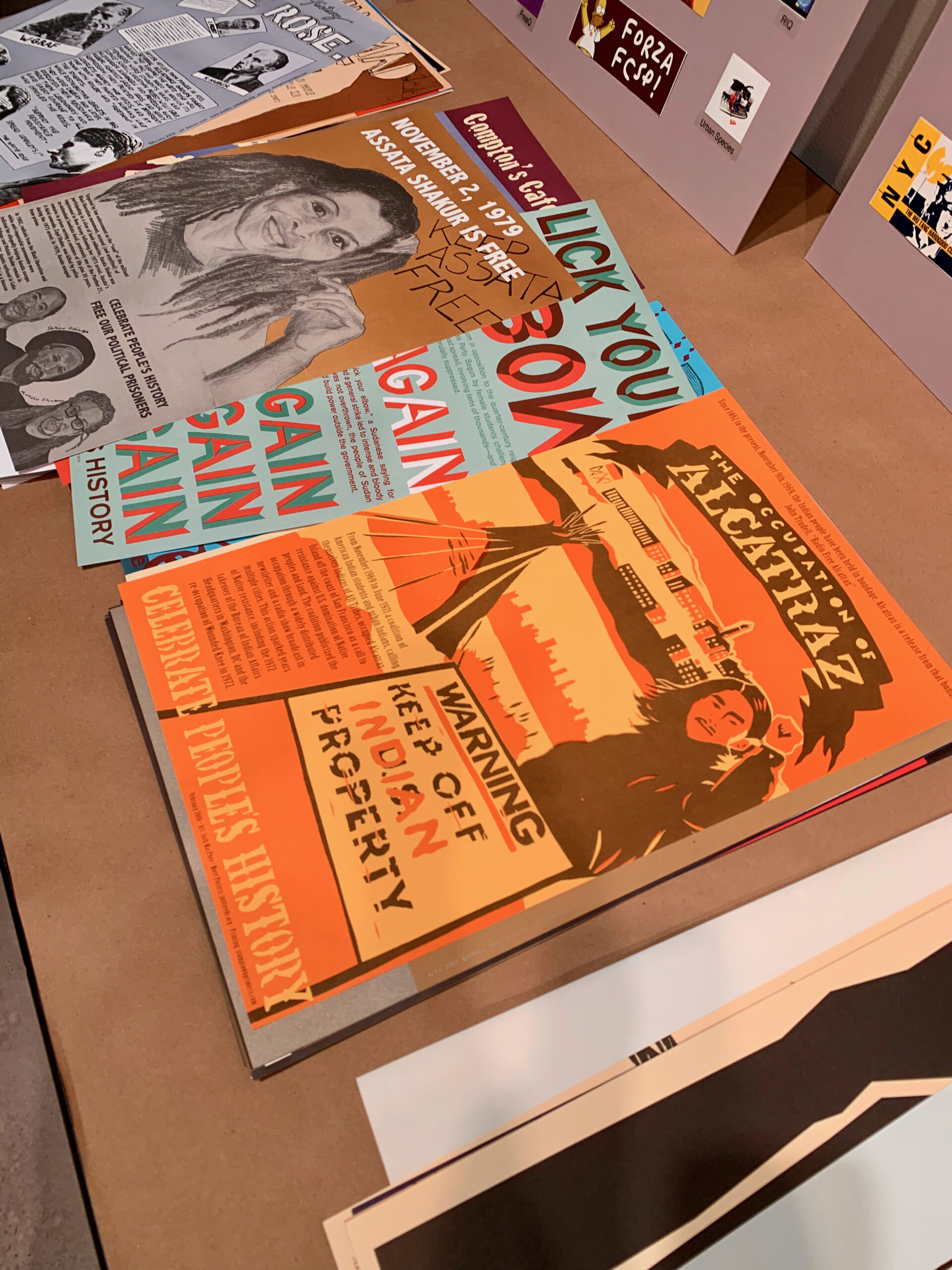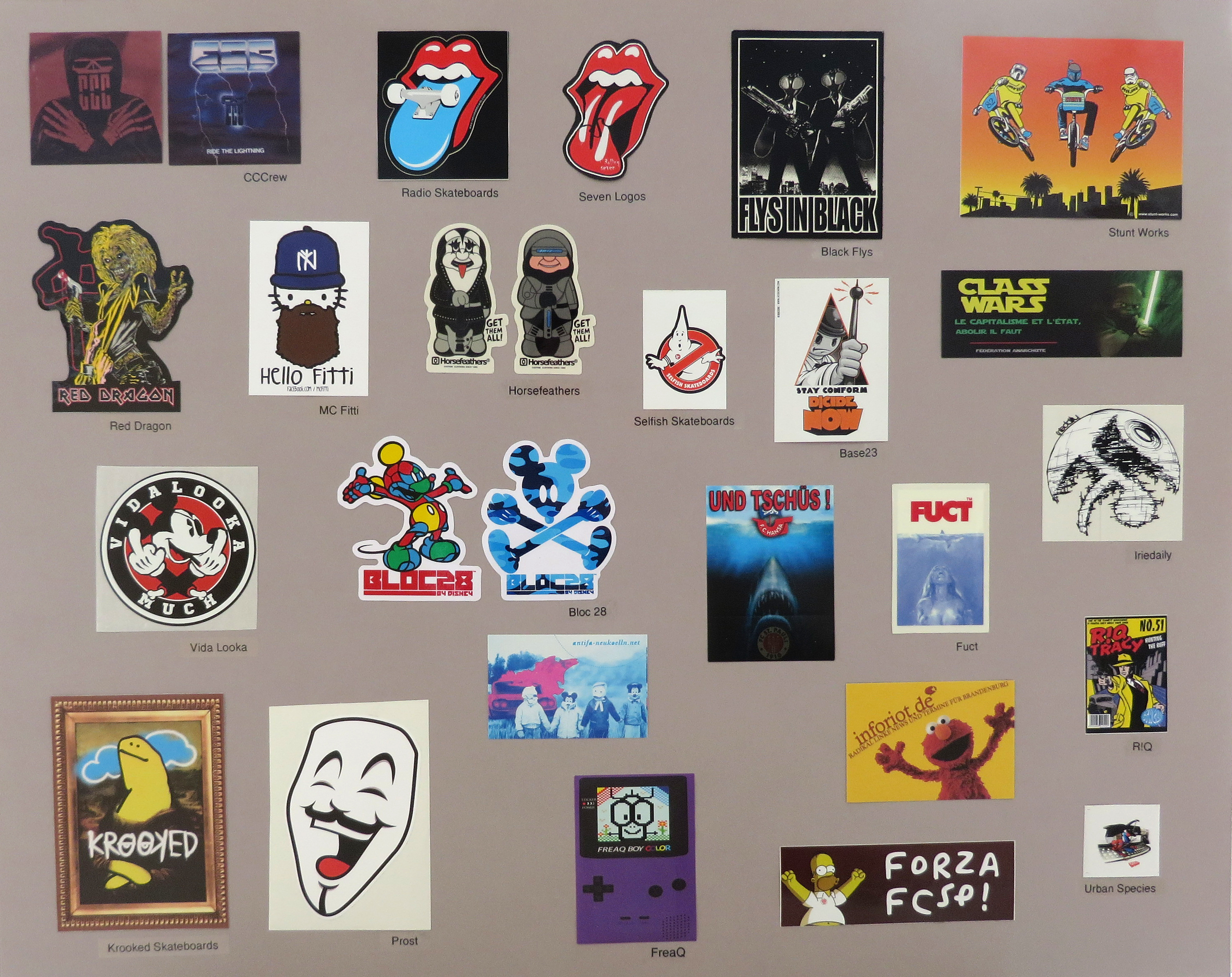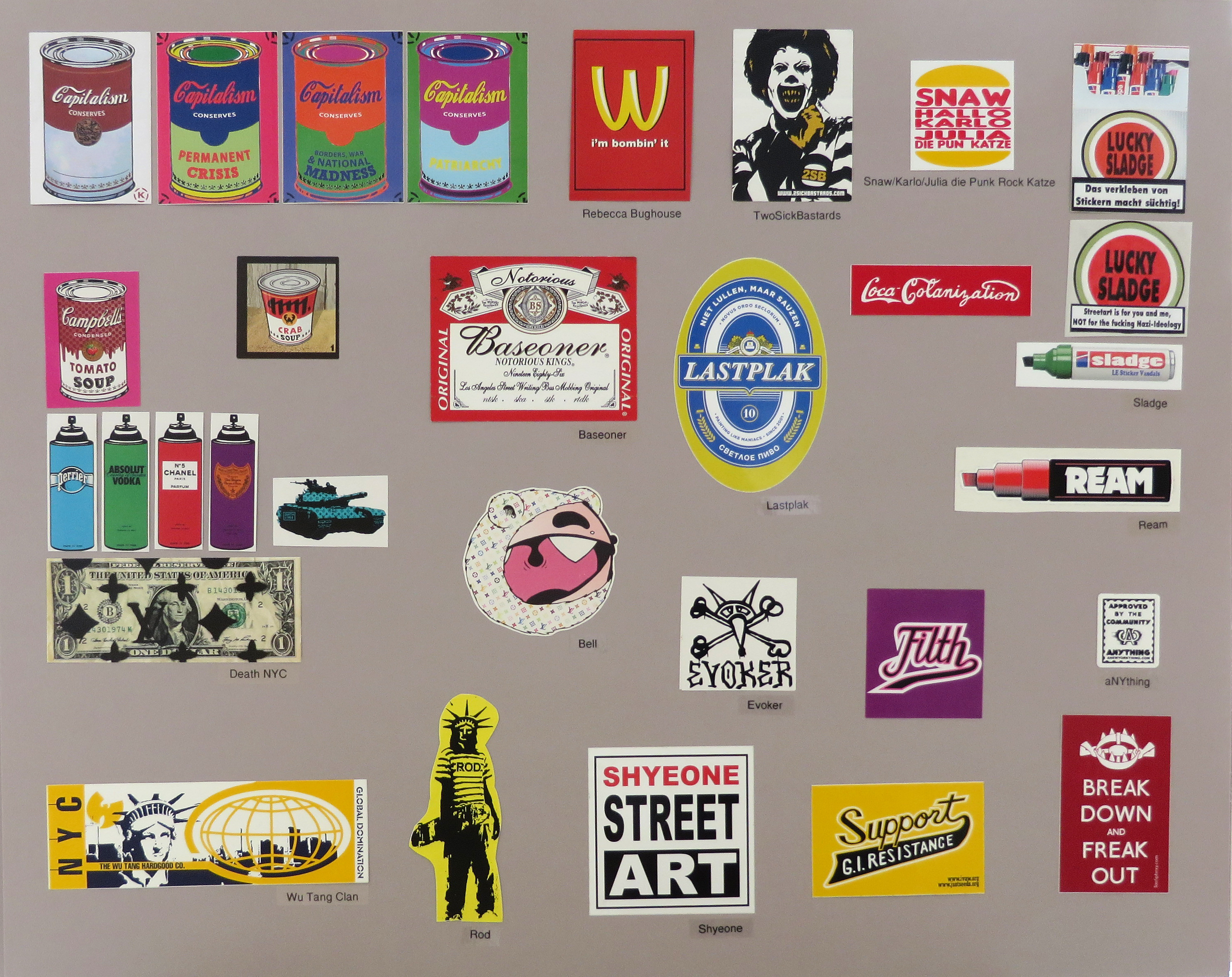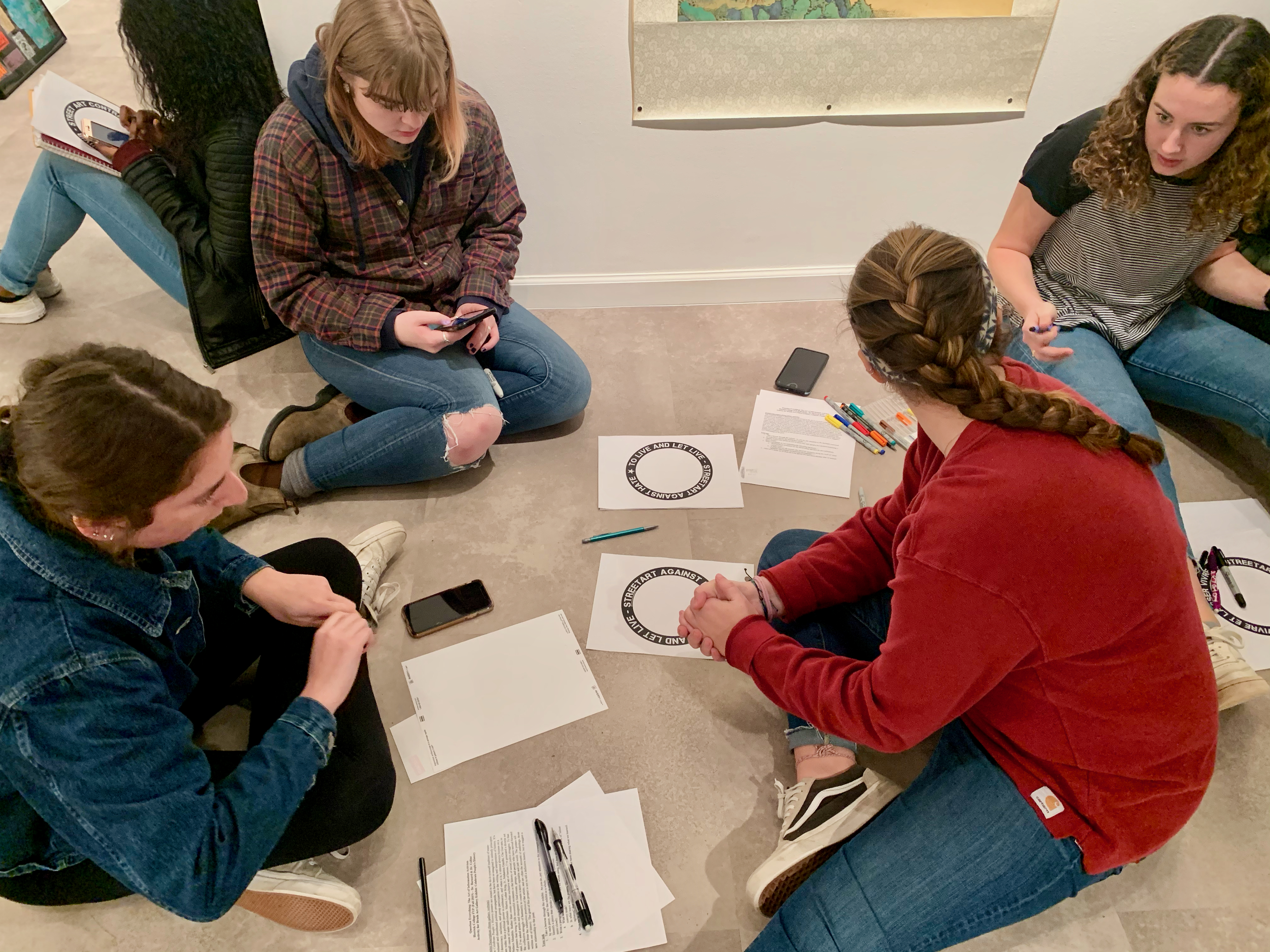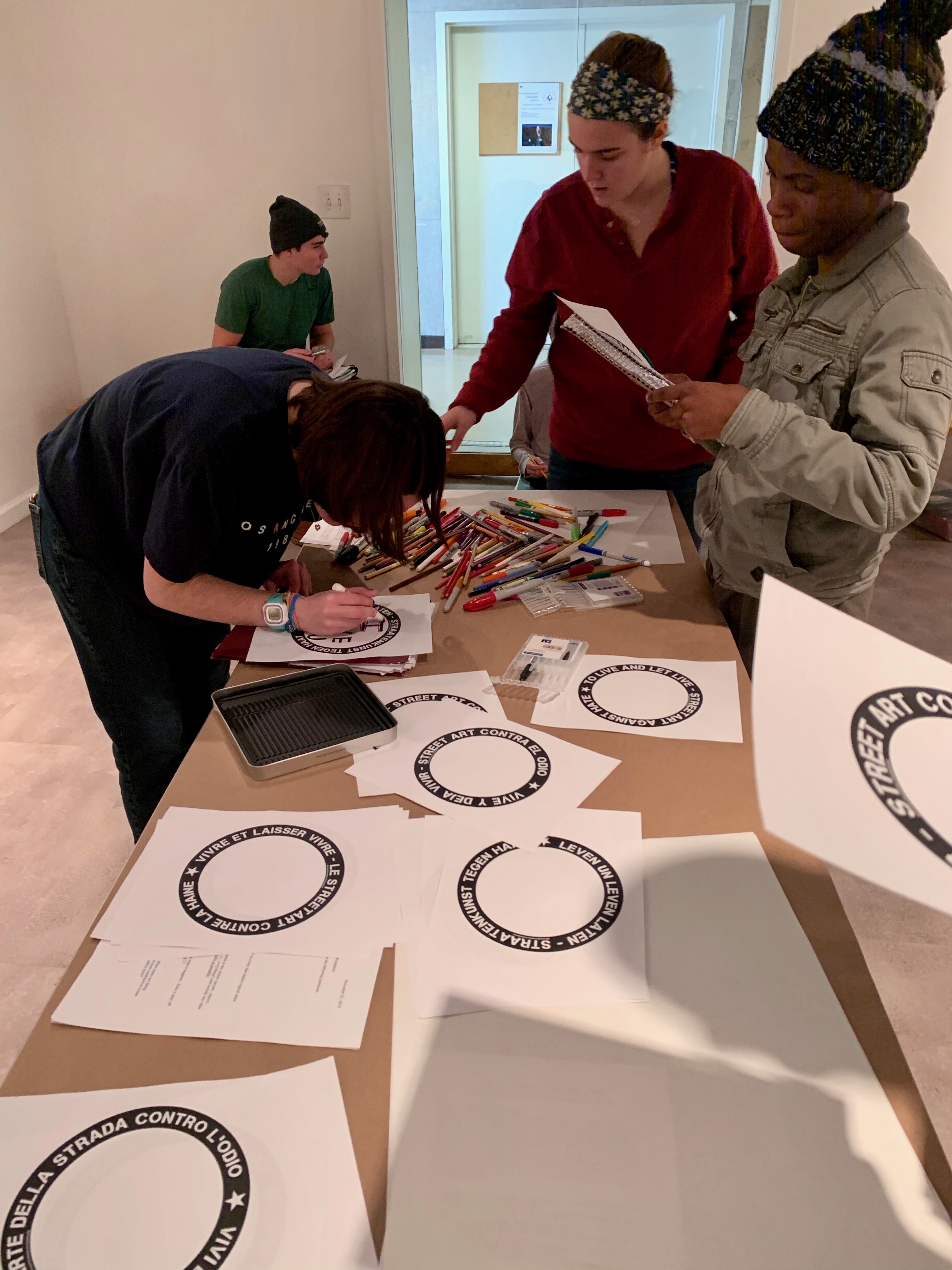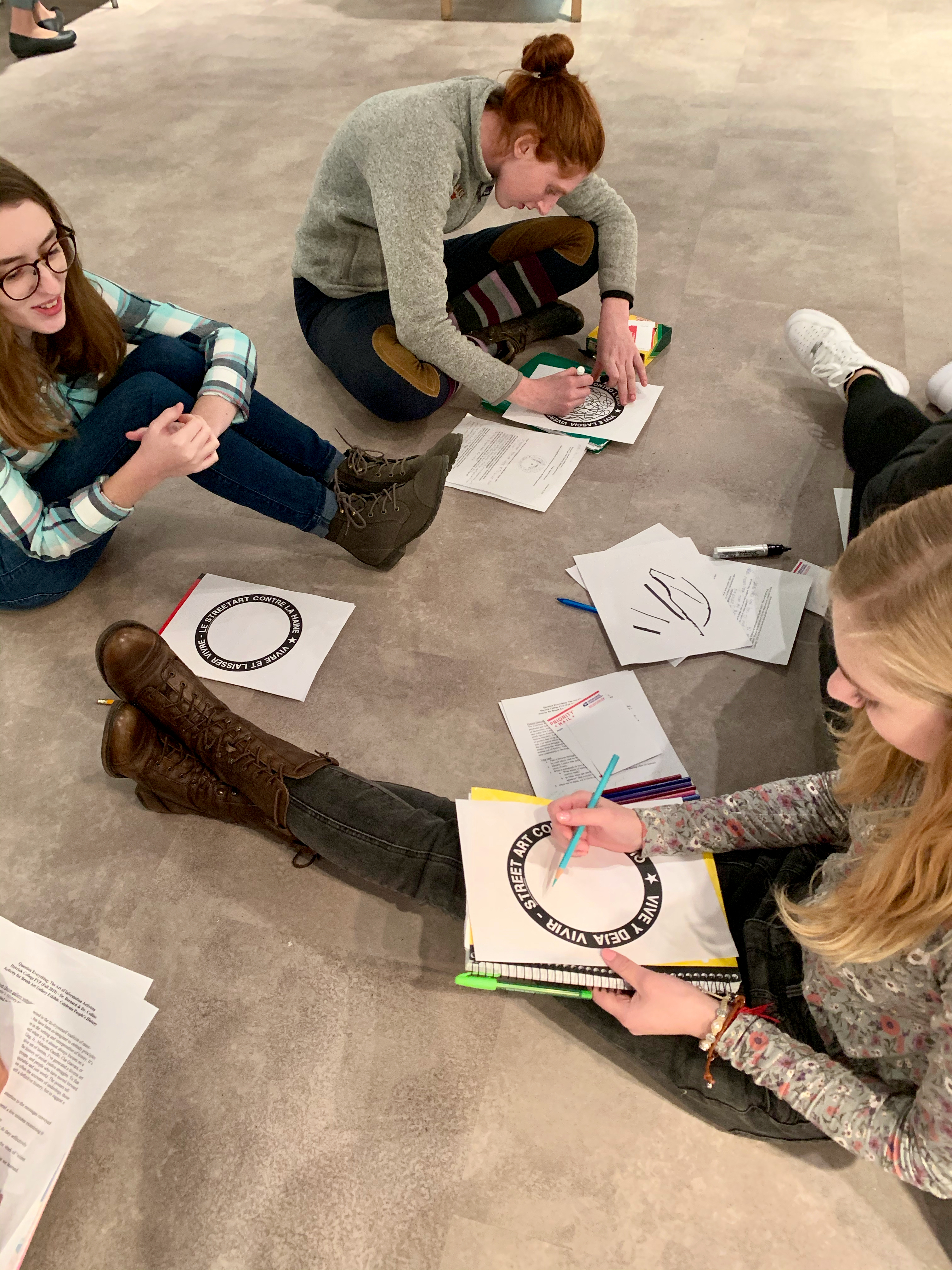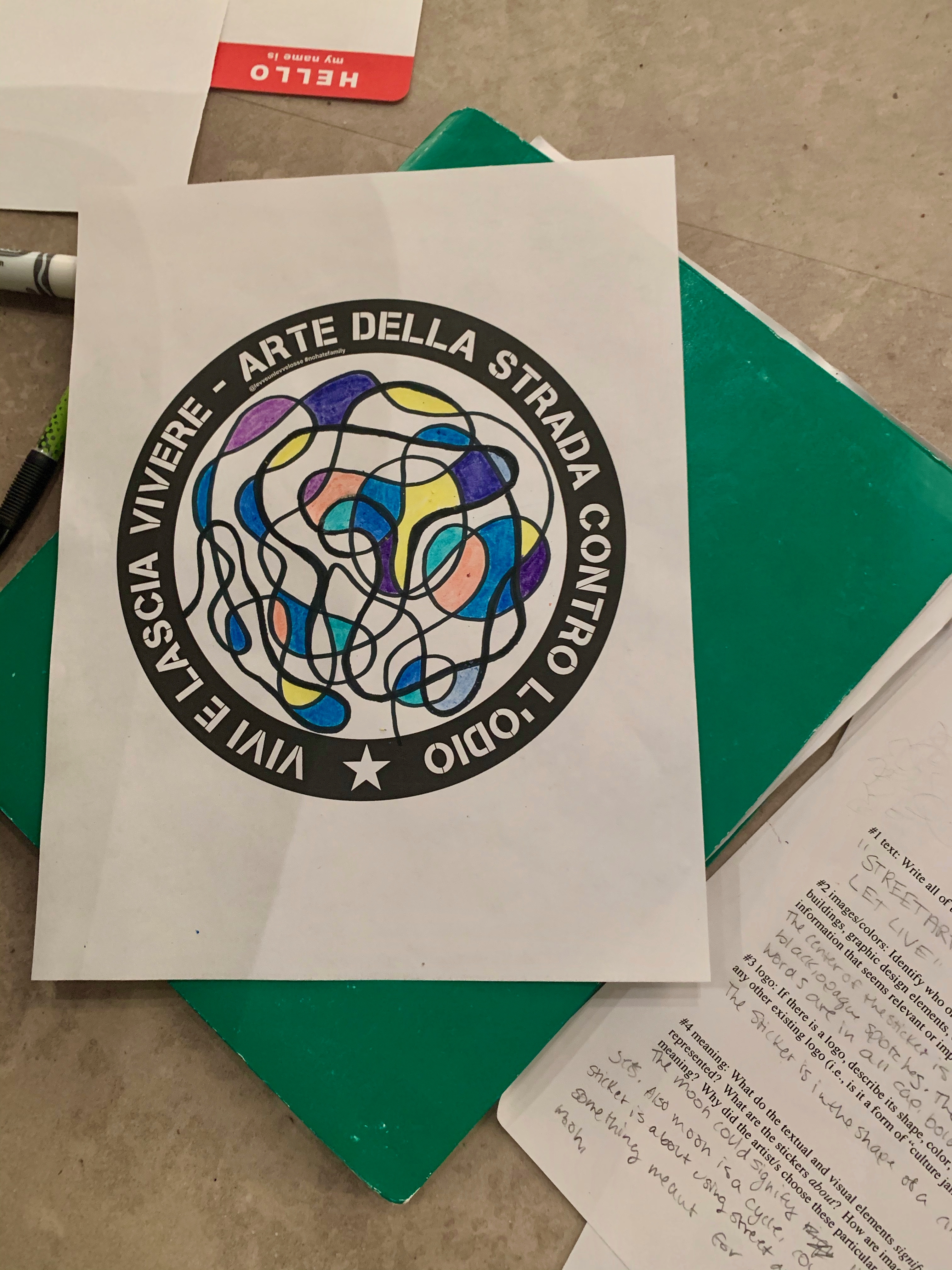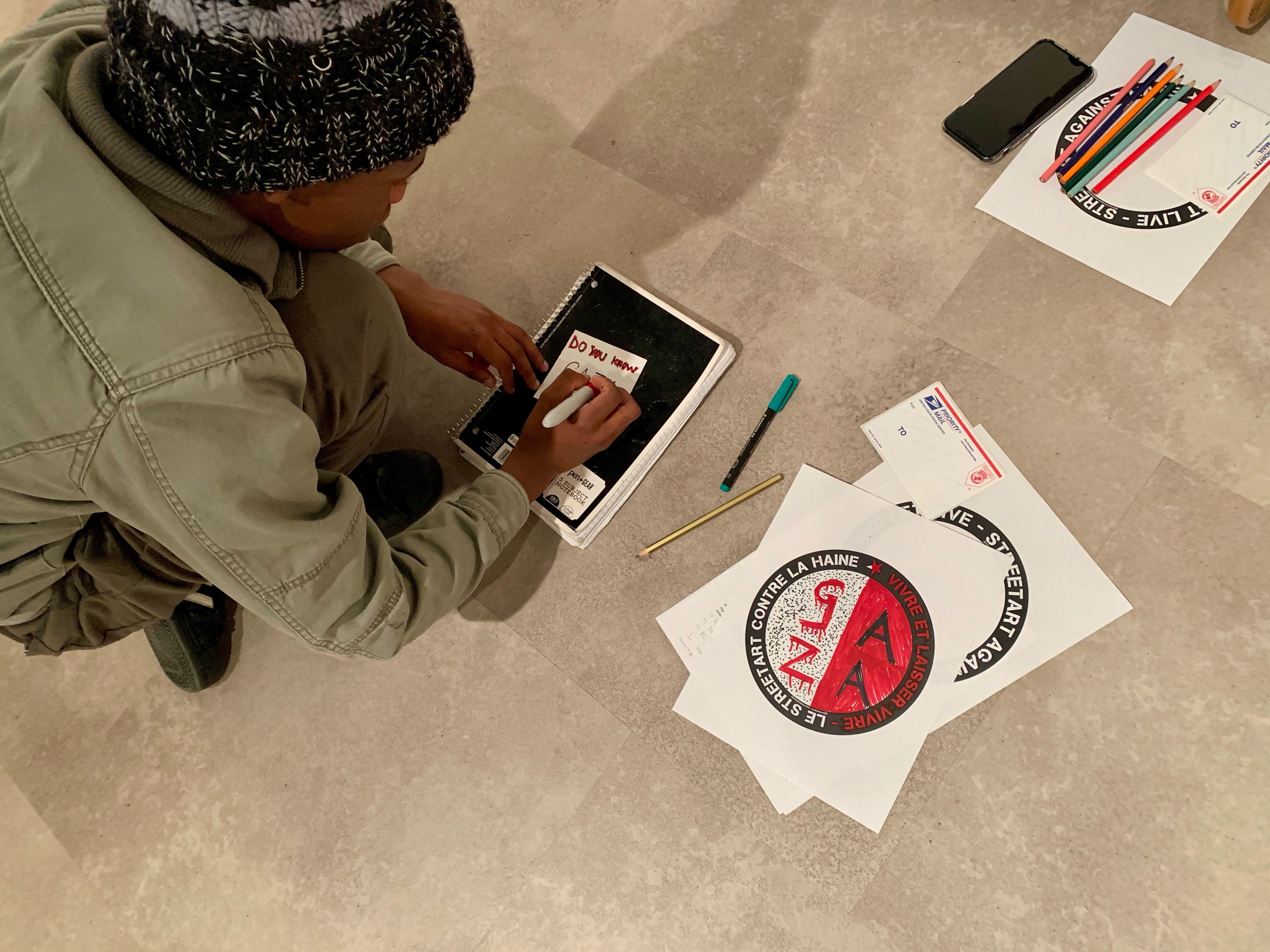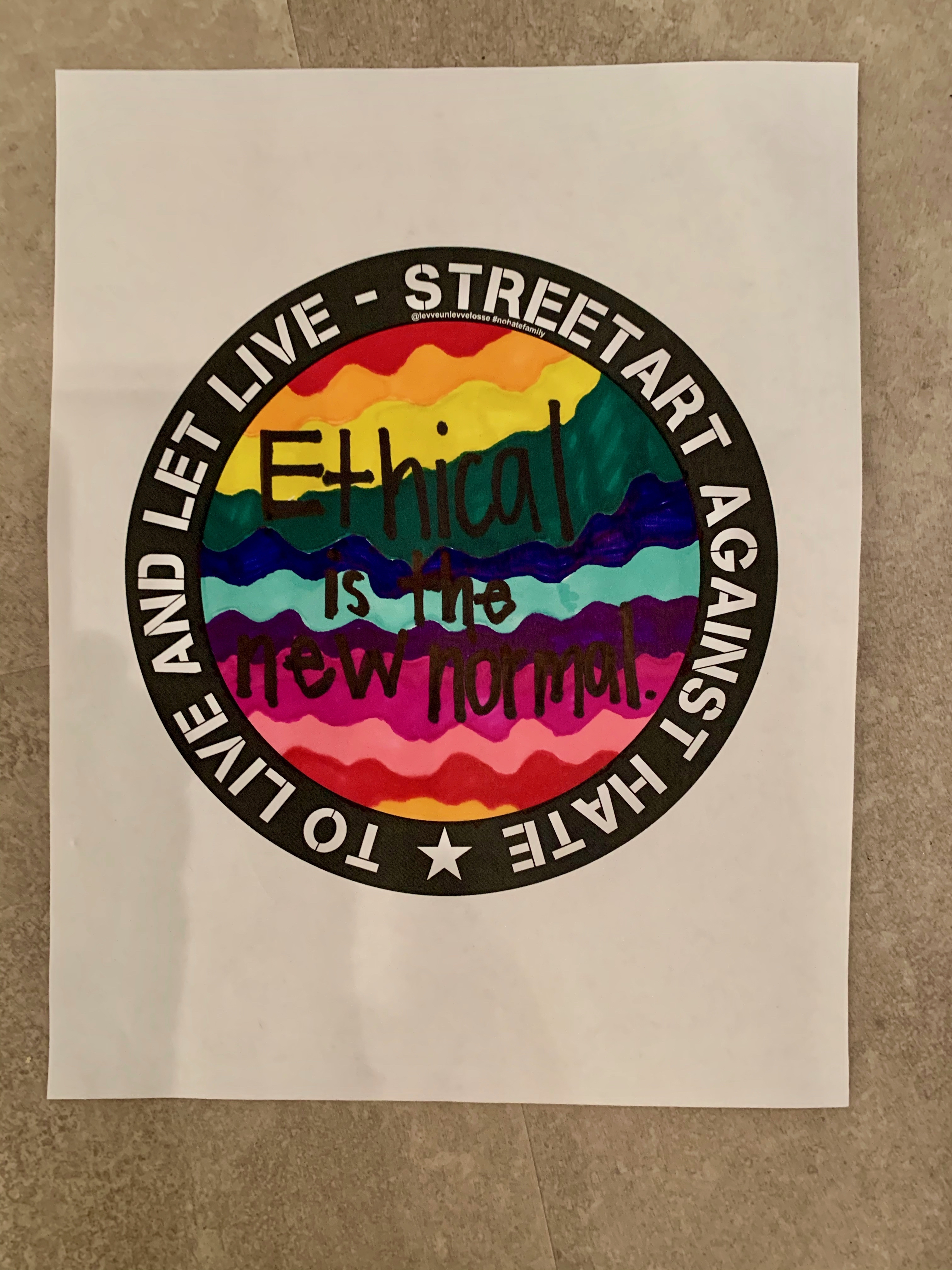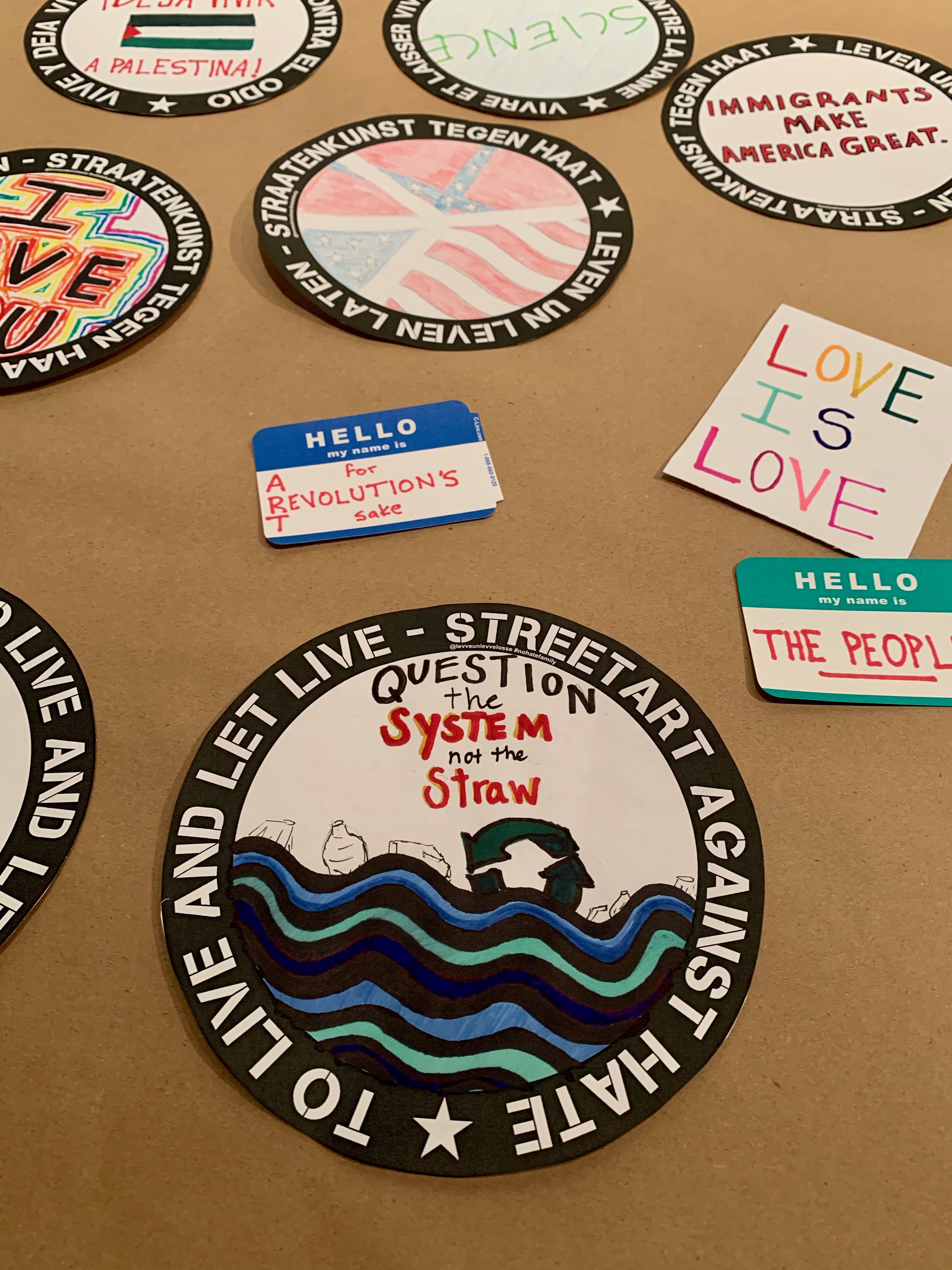Sticker making workshop with St. Lawrence University First-Year Program class
- Published
- in all, the faith of graffiti
Two SLU professors, Steve Barnard (Sociology) and John Collins (Global Studies), brought their First-Year Program class to the gallery in November 2019 for a hands-on sticker making workshop. The name of the course is “Question Everything: The Art of Information Activism,” and the syllabus states:
This course is for students who want to be activists for change and activists for truth. Activists are people who seek to transform dominant social structures through collective action that often stretches beyond the official political system. Activists start by asking deep questions about the world. Why is there so much injustice? How can we envision a better world and work toward making it happen? How can we get free from the forces that constrain us? Answering these questions requires the ability to navigate through the “information overload” of today’s world. Activists understand how to use information effectively and ethically, how to make their own media, and how to use the resources available to them to build community, promote truth, and pursue change. In this course we will explore powerful examples of activists who are asking big questions and using information creatively to develop solutions from the ground up. We will develop critical perspectives that connect the local to the global and the personal to the broader social world. We will learn important skills of investigation, analysis, and activism and put those skills to work in ways that (hopefully) promote truth and positive change.
We started the class by looking at activist posters from Justseeds, a decentralized worker-owned cooperative of thirty artists throughout North America. In 2018, St. Lawrence University purchased over a hundred posters from a series called Celebrate People’s History organized and curated by Josh MacPhee. Josh writes:
The Celebrate People’s History posters are rooted in the do-it-yourself tradition of mass-produced and distributed political propaganda, but détourned to embody principles of democracy, inclusion, and group participation in the writing and interpretation of history. It’s rare today that a political poster is celebratory, and when it is, it almost always focuses on a small canon of male individuals: MLK, Ghandi, Che, or Mandela. Rather than create another exclusive set of heroes, I’ve generated a diverse set of posters that bring to life successful moments in the history of social justice struggles. To that end, I’ve asked artists and designers to find events, groups, and people who have moved forward the collective struggle of humanity to create a more equitable and just world. The posters tell stories from the subjective position of the artists, and are often the stories of underdogs, those written out of history. The goal of this project is not to tell a definitive history, but to suggest a new relationship to the past.
We also looked at stickers from the exhibition Re-Writing the Streets: The International Language of Stickers that Oliver Baudach and I co-curated in 2015. I showed them examples of stickers that employ “culture jamming” techniques, a method used by artists and others to subvert mainstream media and corporate advertising.
As a warm-up, I asked students to draw an existing sticker, an exercise that helps get their creative juices flowing, as some are initially shy to express themselves visually. Having an external prompt like that works well.
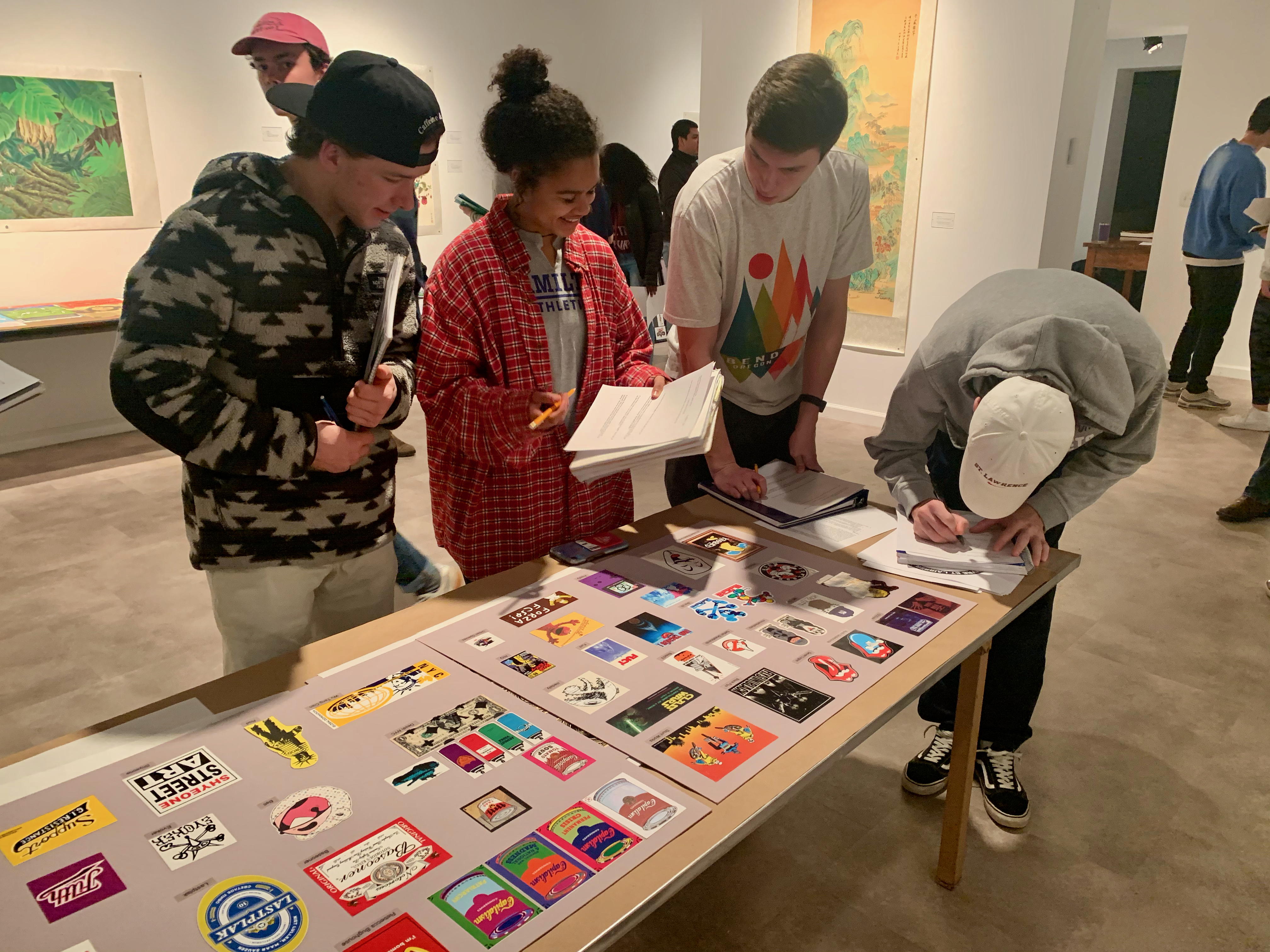
Next, students spent the rest of class by drawing their own stickers from scratch and/or by using a template from the international Streetart Against Hate campaign (another external prompt that worked well). From the group’s website:
Hatred is a global theme and shows its nasty face in many different facets. It’s time to act, it’s time to get loud. About art as a means to an end and about social media for the worldwide networking of artists who set a sign against hatred. The project has been launched via Instagram in November 2018. The viral effect was already clearly perceptible on the net after a few days. Right from the beginning more than 100 artists from all over the world took part, among them many well-known ones like Thomas Baumgärtel (Bananensprayer) and Dave the Chimp joined the #nohatefamily movement. In March 2019, around 1000 artists are already actively setting a creative sign against hatred with their own individual designed #nohatefamily sticker. To set a sign against hatred means concretely to demonstrate by the union of the artists in the collages that we united stand for love, diversity and a peaceful togetherness. The bigger sticker collages are called “Walls of Love.”
Several students chose to draw a #nohate design, and we decided afterwards that we’re going to wheatpaste the drawings onto a piece of painted plywood as a collaborative art project. I’ll send a photo of the finished “Wall of Love” piece to the #nohatefamily levveunlevvelosse (live and let live) Instagram site, too.
